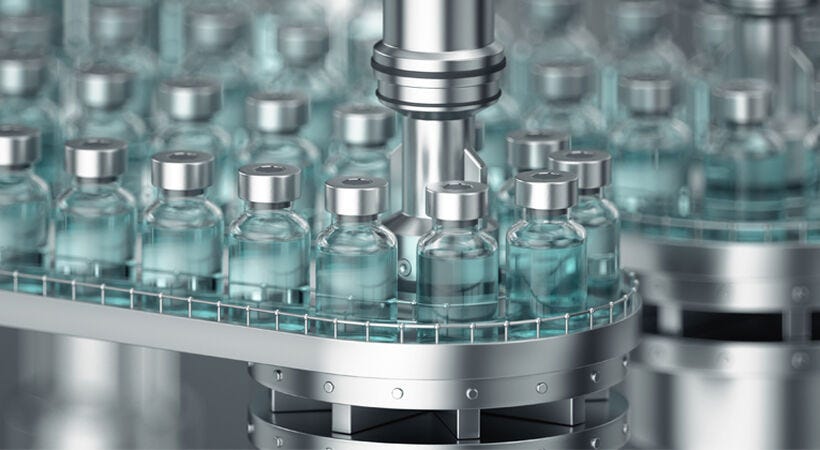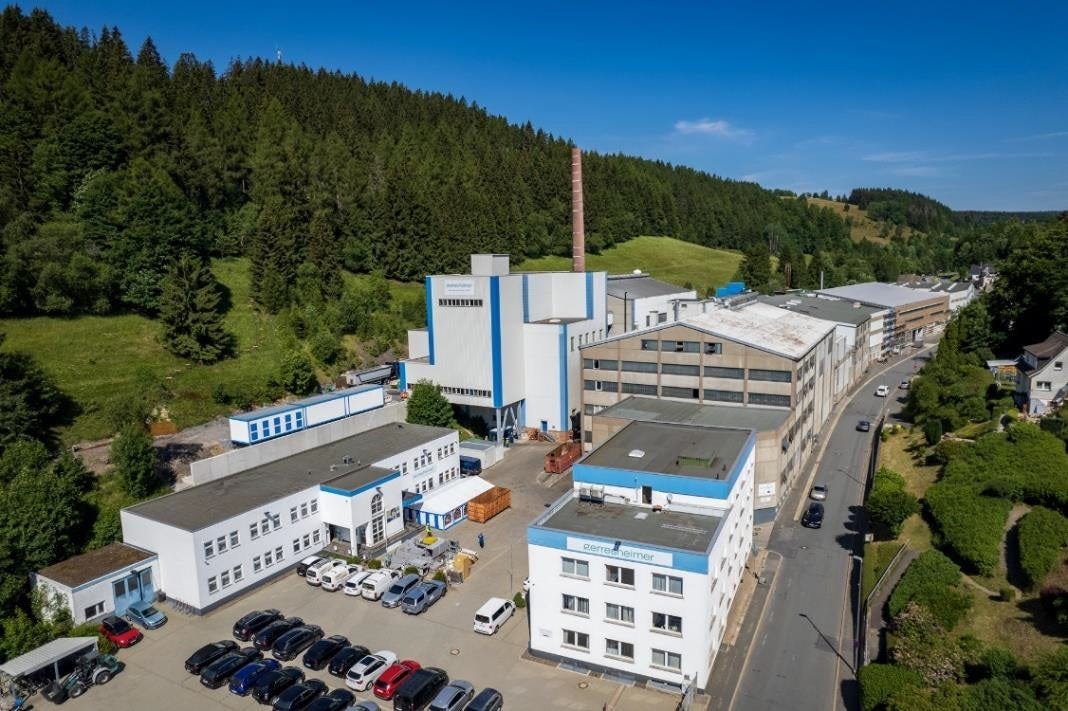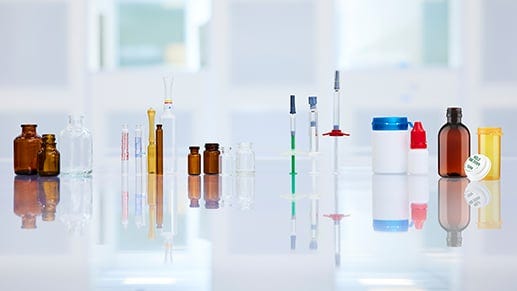This 🇩🇪 Company Powers the Drug Boom — and No One’s Watching
💉 Injectors, pens, and pharma-grade margins: Gerresheimer is building the hardware stack behind the next decade of medicine. Quietly. Relentlessly.
I dig up undervalued, under-the-radar stocks — and I tell you why they’re worth watching, without boring the hell out of you.
💻📈 Company Overview
🔤 TICKER: GXI • XETRA 🔢 ISIN: DE000A0LD6E6
Founded in 1864 and headquartered in Düsseldorf, Germany, Gerresheimer is a global heavyweight in pharma packaging and drug delivery systems. Their thing? Making the critical containers and devices that get meds from lab to patient — syringes, pens, vials, cartridges, inhalers. This is industrial excellence with a healthcare twist: 40+ production sites, big-name pharma clients, strict regulatory moats, and products that are as sticky as it gets.
Their sweet spot lately? Autoinjectors and pens, especially for GLP-1 drugs (think Wegovy, Ozempic). Demand’s booming, and they’re building capacity fast to ride the wave.
Financial, Assets & Strategic Overview
— Revenue Growth & Stream Mix, Profitability Margins, and Infrastructure Investment
Revenue Growth & Stream Mix
Sales Growth:
In FY 2024, Gerresheimer pulled in €2.04B in revenue, up +2.3% YoY.
Main driver: their Plastics & Devices segment, especially pens and autoinjectors, which reached €1.14B in revenue, with +8% organic growth. The rest? Traditional glass packaging (vials, bottles), which saw softer demand but still contributes meaningful volume.
Recurring vs. Contract Revenue Mix:
Split not directly disclosed, but the business is anchored in long-term pharma contracts, high client retention, and multi-year device programs. Think low churn, predictable cash flow — especially in drug delivery.
Bottom line: a stable base in regulated packaging + growing momentum in high-margin delivery tech = durable cash engine.
Segment Breakdown
Plastics & Devices: Now the growth engine. Autoinjectors, inhalers, insulin pens — complex stuff, but once validated by pharma, you’re locked in for years. FY 2024 EBITDA margin: 25.7% Major capex is going here — scaling facilities in the US, Mexico, and Eastern Europe.
Primary Packaging Glass:
Still key, though under pressure. Molded glass demand dipped in Q1 2024. But remains essential for volume, especially in emerging markets and generics.
Profitability Margins & Asset Investment
Margins:
Gerresheimer delivered a solid FY 2024 with adjusted EBITDA of €419.4M, for a 20.6% margin — up from 19.8% the year before. Plastics & Devices is the star here, hitting 25.7% margin, driven by high-value injectors and stable pharma demand.
Net income came in at €159.5M, slightly down YoY due to FX impacts and ramp-up costs tied to capacity expansions. Not a red flag — just the price of scaling fast in regulated manufacturing.
Assets:
Total assets: €3.19B.
Capex: €297M in 2024 — up sharply as they doubled down on syringe and autoinjector lines in North America and Europe.
Equity ratio: 34.7%, showing solid financial footing.
Leverage: Net debt/EBITDA at 2.9x — elevated but manageable, given long-term contracts and EBITDA growth ahead.
🧿 No drama here — they’re building scale with pharma backing them all the way.
1300 subscribers discovering hidden market gems every week.
Are you one of them?
Innovation & Market Tailwinds
Gerresheimer isn’t just a glass bottle company anymore. That’s the old story.
The real story? They’re morphing into a critical enabler of next-gen pharma — with tech-driven manufacturing, drug delivery systems, and regulatory-grade precision. In 2024, they ramped up automation across key sites, rolling out AI-driven quality control, real-time production analytics, and advanced robotics for high-throughput syringe and pen assembly. Not flashy press release stuff — real tools to scale regulated devices with zero defect tolerance. They’re also building digital twins for production lines, letting engineers simulate, tweak, and optimize before touching a real machine. In pharma, where downtime is death and validation is a nightmare, this is a quiet revolution, a real dream that comes true.
🧿 And let’s not forget Gerresheimer’s strategic bet on GLP-1:
They’re not “participating” — they’re embedding themselves into the drug delivery stack. Autoinjectors, pens, smart systems — they’re already manufacturing devices used in Wegovy, Ozempic, and others coming fast behind. The obesity drug boom isn’t a trend — it’s a decade-long supply chain play. And Gerresheimer is building the hardware backbone.
🧿 Oh, and they’re thinking SaaS too.
With Gx Solutions, they’re starting to layer software services on top of devices: compliance tracking, injection data, patient adherence — all the stuff pharma loves for post-market monitoring and value-based care. It’s not vaporware. It’s running, and it’s monetized.
By the way, some market trends we have to take into account:
The injectable drug delivery market is anticipated to grow from $772.9 billion in 2023 to $1.63 trillion by 2030, with a CAGR of 11.3% .
The market for connected drug delivery devices is expected to escalate from $1.08 billion in 2024 to $8.14 billion by 2033, growing at a CAGR of 23.13% .
The global pharmaceutical packaging market is forecasted to reach $265.70 billion by 2030, growing at a CAGR of 9.7% from 2023 .
Next on the roadmap:
Expansion into connected drug delivery (smart inhalers, NFC pens, etc.)
Modular, AI-enabled injector lines in the US and EU
Integration of Bormioli’s assets for full platform scale
Market Position & Competitive Moat
Gerresheimer doesn’t just sell vials and syringes — they sell regulatory peace of mind to Big Pharma. They are the problems avoiders.
And in this game, trust and compliance is the real moat.
They’re one of the top global players in drug delivery systems (autoinjectors, pens, inhalers) — with clients who don’t take chances.
40+ sites across Europe, the US, LatAm and Asia = dense local ops + strategic redundancy (the pharma industry loves that).
They’re already embedded in the supply chains of GLP-1 blockbusters like Wegovy and Ozempic. This isn’t a maybe — they’re in the pipe.
🧿 And here’s the kicker: while the market still sees them as a boring packaging play, Gerresheimer is consolidating the stack.
The 2024 acquisition of Bormioli Pharma? Not just scale — control. More capacity, more formats, more reasons for pharma to plug into their platform. Their edge?
It starts with contractual stickiness:
Once pharma validates a supplier, they don’t switch next quarter. We’re talking 5–10 years minimum. These are validated medical devices, not shampoo bottles. You don’t mess with the supply chain once it’s locked.
Then there’s the regulatory moat:
Making autoinjectors isn’t plug-and-play. It takes years of compliance, audits, and certifications. Gerresheimer already passed those hoops. Most challengers? Still stuck in PowerPoint mode.
And finally, scale + tech:
They’re scaling high-margin devices across four continents. Also, they’re integrating digital layers into devices (Gx Solutions, smart pens, tracking modules). And they have the capex muscle to reinvest fast — because when Novo Nordisk calls, you don’t tell them “we’ll get back to you in Q3”.
🧿 This isn’t just industrial capacity. It’s infrastructure + regulatory defensibility + software hooks — in a sector with 0 room for failure. So you start to get it, Gerresheimer isn’t optional. They’re becoming essential.
Strategic Initiatives & Recent Developments
Post-Bormioli Integration
The late 2024 acquisition of Bormioli Pharma? A major move. Not opportunistic, not a growth-for-growth’s-sake deal. Just another brick in the “full-stack pharma supplier” playbook.
Integration? Already well underway.
Synergies? Not publicly quantified, but think broader product portfolio, shared production footprint, and more leverage in pharma tenders.
Bottom line: Gerresheimer is shifting from supplier to strategic partner — more influence, more optionality, more scale.
They didn’t just buy a company = They expanded their regulatory comfort zone.
Strategic Expansion — But Make It Surgical
No panic M&A, no messy diversifications.
Gerresheimer is doing targeted stacking, exactly where it strengthens their moat.
Massive capex on injector and syringe lines: Peachtree City (US), Queretaro (Mexico), Skopje (North Macedonia), Horsovsky Tyn (Czech Republic).
Why those locations? Because they align with logistics hubs and client manufacturing zones. Pharma wants “just in case” + “just in time”. Gerresheimer delivers both.
Digital Layer Incoming
In 2024, Gerresheimer also took a stake in RxCap, a medtech firm making smart vial caps (yep, that’s a thing). The goal? Add a layer of patient compliance tracking via connected devices and pharma dashboards. This isn’t just hardware. It’s the early stage of a light med-SaaS model, where Gerresheimer captures part of the post-use value stream.
📈 Opportunities I Identified
Keep reading with a 7-day free trial
Subscribe to Hidden Market Gems to keep reading this post and get 7 days of free access to the full post archives.








